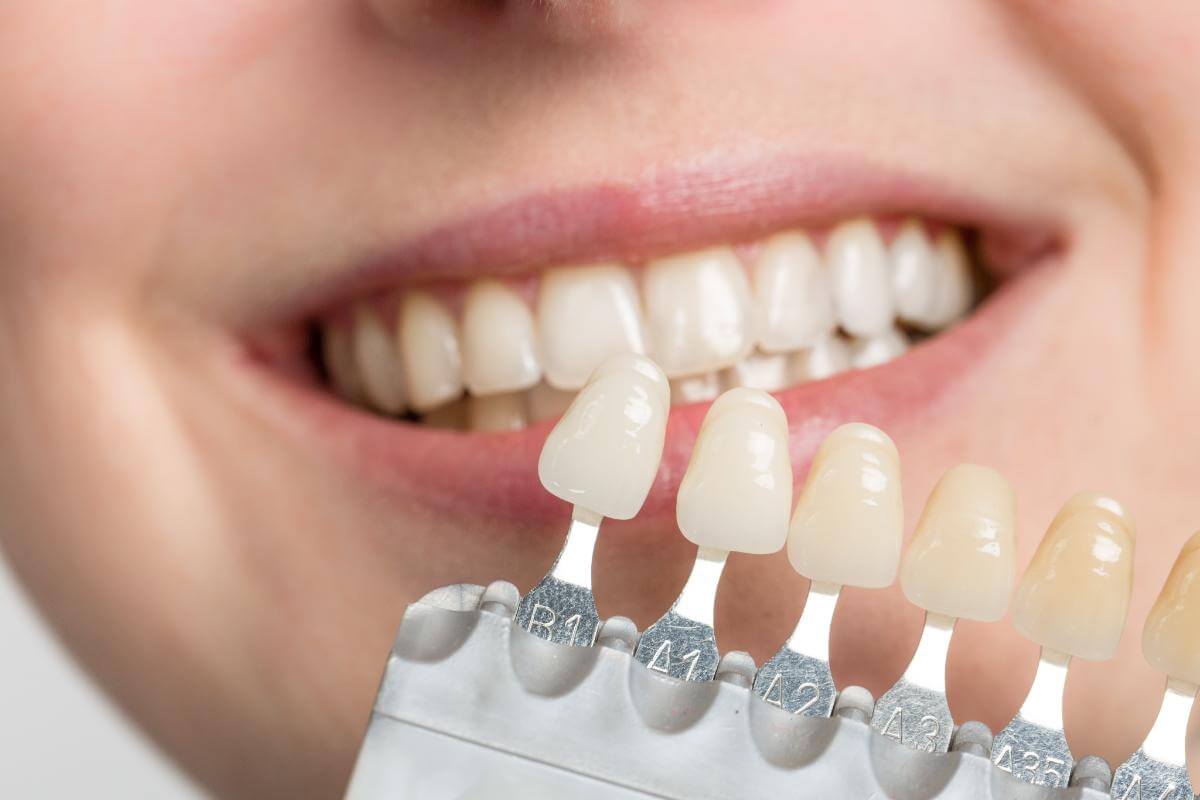When it comes to achieving a perfect smile, dental veneers are a popular and effective solution. Veneers can transform teeth that are stained, chipped, misaligned, or have gaps. There are two main types of dental veneers: porcelain and composite. Each type has its own advantages and considerations. In this article, we’ll explore the differences between porcelain veneers and composite veneers to help you make an informed decision.
What Are Dental Veneers?
Dental veneers are thin shells that are custom-made to fit over the front surface of your teeth. They are designed to improve the appearance of your teeth by covering imperfections and providing a uniform, attractive look. Veneers can be made from different materials, with porcelain and composite being the most common.
Porcelain Dental Veneers: Things to Know
- Material and Durability: Porcelain veneers are made from high-quality ceramic material that closely mimics the natural appearance of tooth enamel. They are highly durable and resistant to staining, making them a long-lasting solution for many dental issues. With proper care, porcelain veneers can last between 10 to 15 years or even longer.
- Aesthetics: One of the main advantages of porcelain veneers is their natural look. Porcelain reflects light in a way that is very similar to natural teeth, giving them a realistic and aesthetically pleasing appearance. This makes them an excellent choice for individuals looking to achieve a seamless smile.
- Procedure: The process of getting porcelain veneers typically involves two to three visits to the dentist. During the first visit, the dentist will remove a thin layer of enamel from the front surface of the teeth to make room for the veneers. An impression of the teeth is then taken and sent to a dental laboratory where the veneers are custom-made. In the final visit, the veneers are bonded to the teeth using a strong adhesive.
- Cost: Porcelain veneers are generally more expensive than composite veneers. The higher cost is due to the superior material, longer lifespan, and the time required to custom-make the veneers in a lab. However, many patients find the investment worthwhile due to the exceptional results.
Composite Dental Veneers: Things to Know
- Material and Durability: Composite veneers are made from a tooth-colored resin material. While not as durable as porcelain, composite veneers are still a strong option and can last between 5 to 7 years with proper care. They are more prone to staining and chipping compared to porcelain veneers.
- Aesthetics: Composite veneers can also improve the appearance of your teeth, but they may not look as natural as porcelain veneers. The resin material does not reflect light in the same way as natural teeth or porcelain, which can result in a slightly less natural look. However, skilled dentists can achieve impressive results with composite veneers.
- Procedure: The procedure for composite veneers is less invasive and can often be completed in a single visit. The dentist applies the composite resin directly to the teeth, sculpting and shaping it to achieve the desired look. Once the resin is shaped, it is hardened using a special light. This process is quicker and requires less removal of the natural tooth structure compared to porcelain veneers.
- Cost: Composite veneers are generally less expensive than porcelain veneers. This makes them an attractive option for individuals looking for a more affordable way to improve their smile. However, it’s important to consider the potential need for replacement or repair sooner than with porcelain veneers.
Pros and Cons: Porcelain vs. Composite
Porcelain Veneers:
- Pros:
- Highly durable and long-lasting
- Resistant to staining
- Natural and realistic appearance
- Cons:
- More expensive
- Requires multiple visits
- Irreversible procedure (removal of enamel)
Composite Veneers:
- Pros:
- Less expensive
- Quicker procedure, often done in one visit
- Minimal removal of tooth structure
- Cons:
- Less durable and may require more frequent repairs
- Prone to staining
- Less natural-looking compared to porcelain
Making the Right Choice
Choosing between porcelain and composite veneers depends on several factors, including your budget, the condition of your teeth, and your aesthetic goals. Here are a few considerations to keep in mind:
- Budget: If cost is a significant factor, composite veneers may be the better choice. They offer a more affordable solution while still improving the appearance of your teeth.
- Longevity: If you’re looking for a long-term solution with minimal maintenance, porcelain veneers are likely the better option. Their durability and resistance to staining make them a worthwhile investment.
- Aesthetics: For the most natural and realistic appearance, porcelain veneers are the preferred choice. Their ability to mimic natural teeth makes them ideal for those seeking a flawless smile.
- Procedure: If you prefer a quicker, less invasive procedure, composite veneers might be more appealing. The ability to complete the process in a single visit is a significant advantage for many patients.
Both porcelain and composite veneers offer effective solutions for enhancing your smile. Understanding the differences between these two options can help you make an informed decision based on your specific needs and preferences. For avoiding all the confusions about dental veneers, you should opt for a best ortho dental clinic. Consult with your dentist to discuss which type of veneer is best suited for your situation and to achieve the smile you’ve always wanted.

